You are here
Home › Research › RTTA 3: Anticipation & Deliberation › RTTA 3/4: Futurescape City Tours › Session ISession I
Last Updated: August 21, 2013
Session I: Orientation
Before Session I began we set out our goals for that day. This is a check list of everything we needed and wanted to accomplish during Session I. We also formulated an ![]() agenda_v5.doc for Session I.
agenda_v5.doc for Session I.
Global Goals
- Orient participants to the tour: Explain what kind of inquiry it is. What’s our role as researchers and practitioners?
- Set mood (See
 some guidelines for facilitation.pdf.)
some guidelines for facilitation.pdf.) - Solicit concerns and interests about the futures of Phoenix to plan sites based on these concerns and interests
Practical Goals
- Take care of
 FCT 2012 min risk IRB Form.doc
FCT 2012 min risk IRB Form.doc - Take notes, pictures, and recordings of all the sessions. Designate who will do what beforehand.
- Determine camera needs of participants
Before Session I, we sent an email to participants asking them to be prepared to talk about 3 of their biggest concerns in relationship to technology and their city as well as 3 examples of technological changes that they have witnessed and found significant. They should bring at least one image of these changes or concerns.
We arrived at our venue 2 hours before it was to begin. We oriented the tables into three groups with each designated by a colored bowl of candy. Each table arrangement included room for five to seven chairs. When participants arrived their name tags included two different colored stickers. These colored stickers designated at which tables participants were to sit. The stickers ensured that participants interacted with the majority of other participants before the evening was complete.
We placed the food and drinks at a separate table. We also placed the NISE Network ![]() Nano and Society Posters.pdf on the walls of the room For more information click here. Each table contained writing utensils and note pads. We brought a large flip chart on which to document the report-out at the end of the evening.
Nano and Society Posters.pdf on the walls of the room For more information click here. Each table contained writing utensils and note pads. We brought a large flip chart on which to document the report-out at the end of the evening.
We began checking participants in at 4:30. As they arrived we validated their parking passes, asked them to complete the IRB Permission forms, and handed out name tags. At 5PM we began with a 5 min welcome (see ![]() Session I Power Point.pptx ), thanking participants and laying out the agenda for the evening (add agenda to power point). We then immediately moved into the NanoEquity game without having participants introduce themselves. We did so intentionally as a way to have participants meet one another during the game before knowing anything about each other’s areas of expertise. This was an intentional attempt to reduce any perceived imbalances of authority that might arise when participants relate to one another through their employment status.
Session I Power Point.pptx ), thanking participants and laying out the agenda for the evening (add agenda to power point). We then immediately moved into the NanoEquity game without having participants introduce themselves. We did so intentionally as a way to have participants meet one another during the game before knowing anything about each other’s areas of expertise. This was an intentional attempt to reduce any perceived imbalances of authority that might arise when participants relate to one another through their employment status.
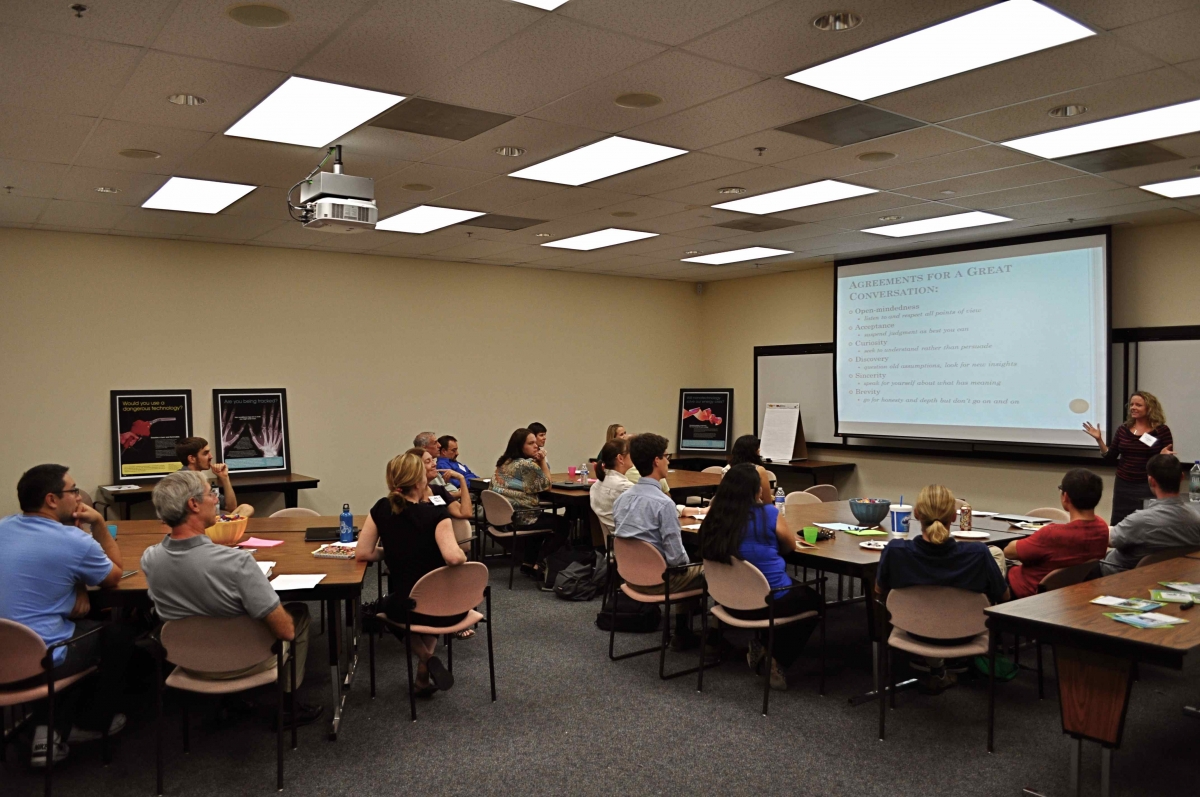 Elements of a Good Discussion (Session 1_1)
Elements of a Good Discussion (Session 1_1)
This game was designed by the NISE Network and is a good brief introduction to nanotechnologies and some of the inequities built into emerging technologies. After 10 or 15 mins of the game, we led a 5 to 10 minute, open-ended discussion about what folks learned from the game. What did it tell them about nanotechnologies? What did it help them understand? What were the challenges of the game? What did they notice as they tried to convince others to give them or trade them a card? Next we spent 15 minutes situating FCT in the context of CNS’s research agenda and introducing the “![]() three_ways_to_think_about_technology_with_videos.doc” We framed our approach to technology through “systems, values, and social relationships” (see Power Point for Session I). We gave brief talks using a tomato, concrete, and a cell phone which demonstrate the relationship among technologies and systems, values, or social relationships. Finally, we introduced some guidelines for
three_ways_to_think_about_technology_with_videos.doc” We framed our approach to technology through “systems, values, and social relationships” (see Power Point for Session I). We gave brief talks using a tomato, concrete, and a cell phone which demonstrate the relationship among technologies and systems, values, or social relationships. Finally, we introduced some guidelines for ![]() discussion.ppt.
discussion.ppt.
We took a break at 6pm to serve dinner.
From 6:15 to 6:45 we conducted our first round of discussions based on the observations and questions we asked them to think about: examples of technological change that they have witnessed during their lifetime and found significant. In particular we wanted them to personalize and localize the changes they have witnessed. Each table’s conversation was recorded, notes were taken, and a facilitator was present. The session concluded with a dicussion about taking photographs and writing captions. Here is a worksheet to give participants. Session I's Powerpoint has some slides to help introduce the caption writing excercise.
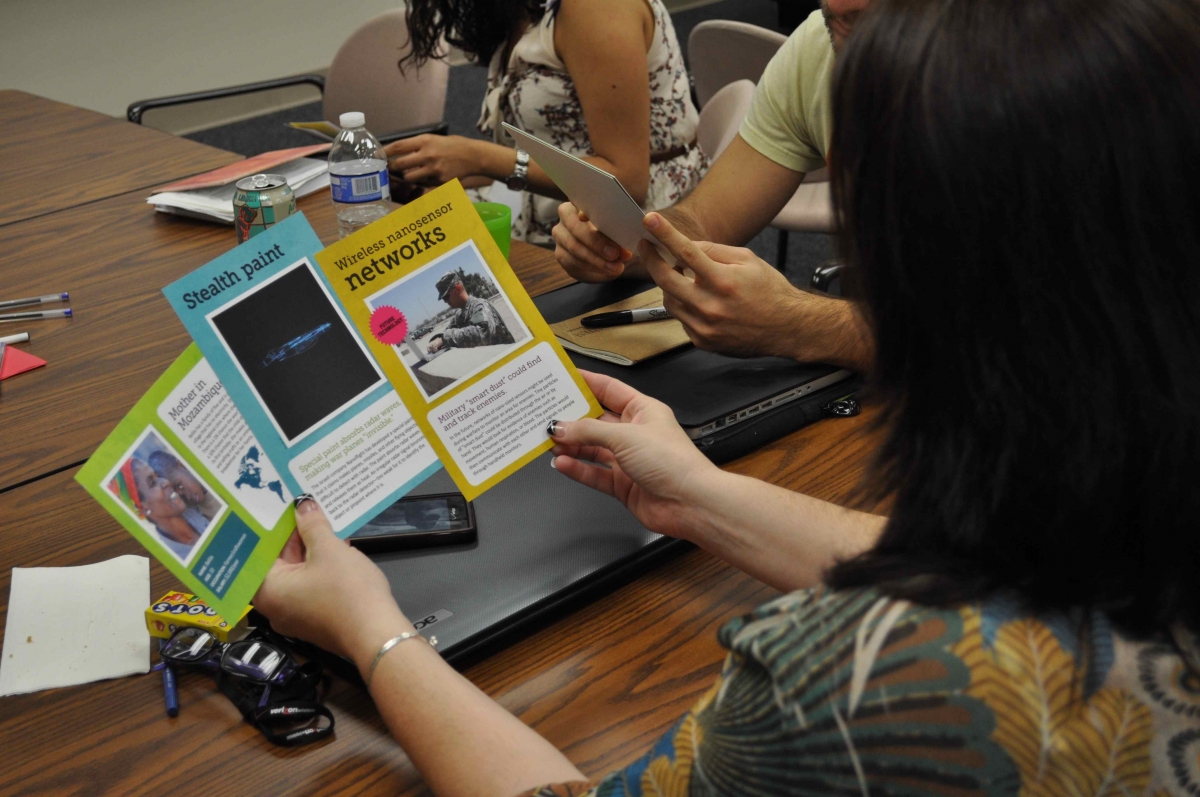 Playing the NanoEquity Around the World Game (Session 1_3)
Playing the NanoEquity Around the World Game (Session 1_3)
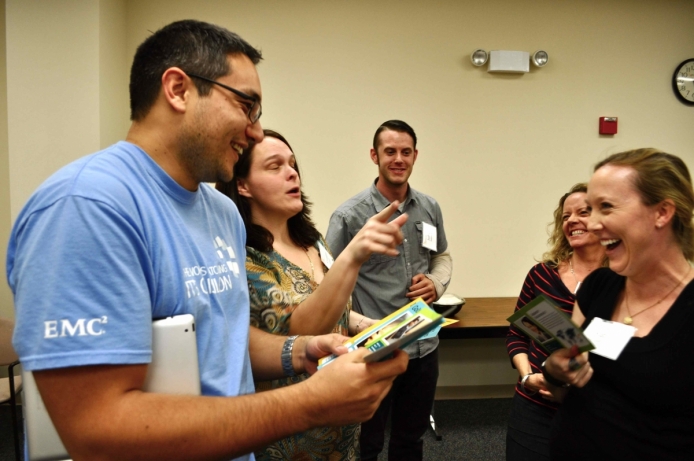 NanoEquity Game (Session 1_4)
NanoEquity Game (Session 1_4)
Table switch. From 6:45 to 7:45 our goal was to figure out to which sites we would go based on the participants’ interests and concerns about the future of the city. We posed some starting questions and asked them to follow our group discussion guidelines (![]() session_i_conversation_cafe_guidelins.ppt). Documentation is very important during this hour so that you can summarize some of the interests and concerns articulated and design the tour around those interests.
session_i_conversation_cafe_guidelins.ppt). Documentation is very important during this hour so that you can summarize some of the interests and concerns articulated and design the tour around those interests.
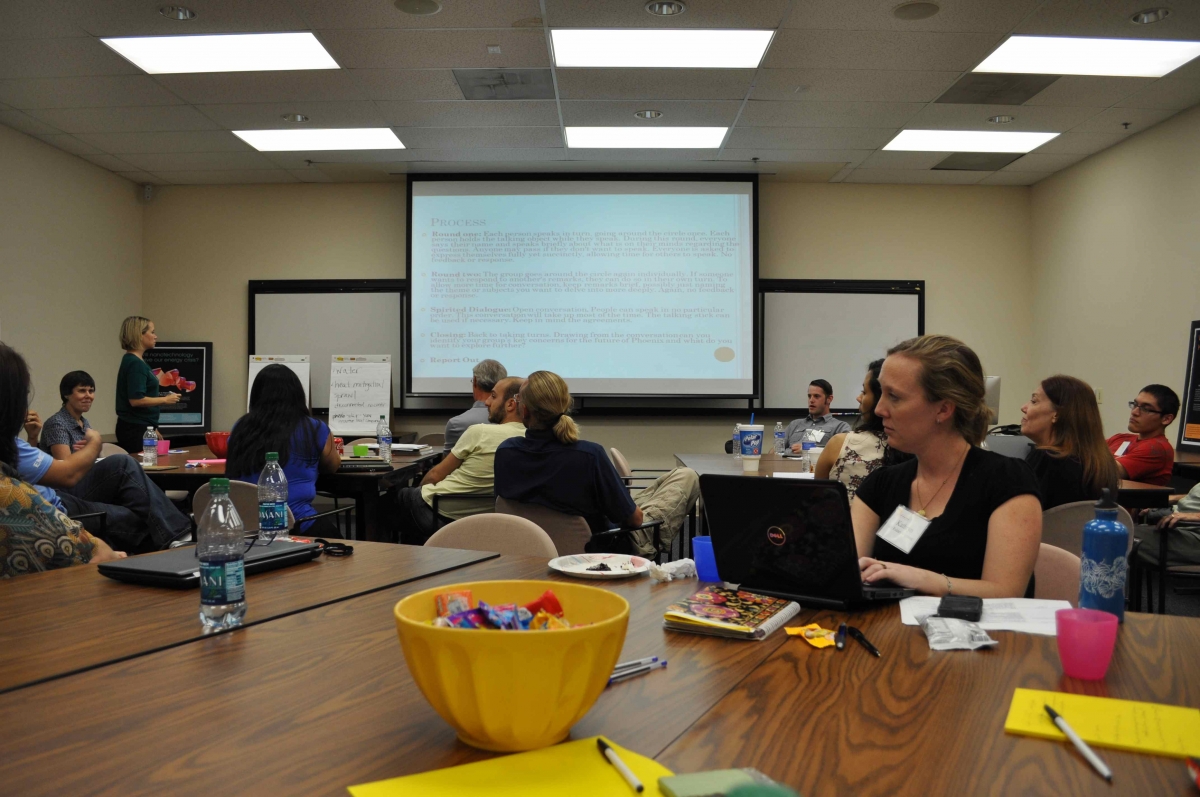 Documenting Concerns and Curiosities (Session 1_6)
Documenting Concerns and Curiosities (Session 1_6)
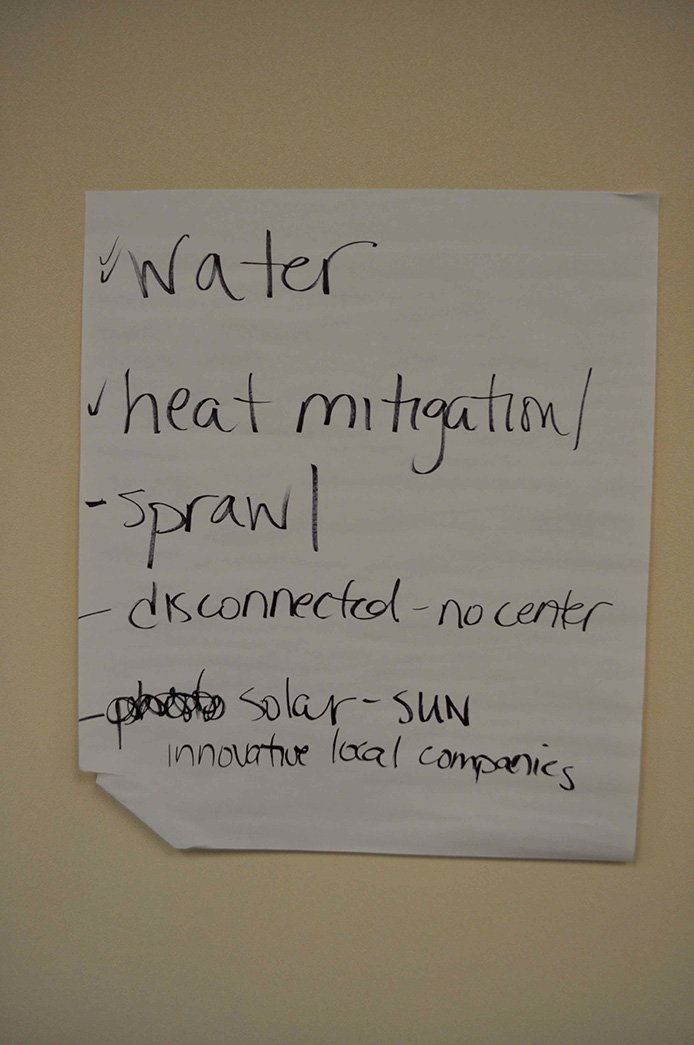
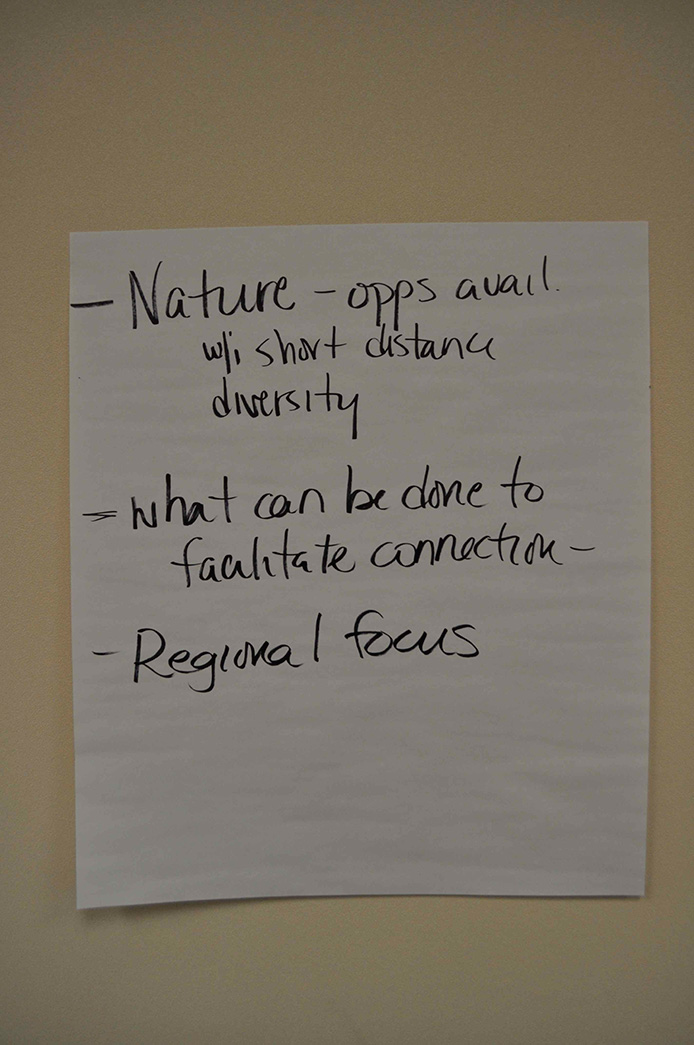
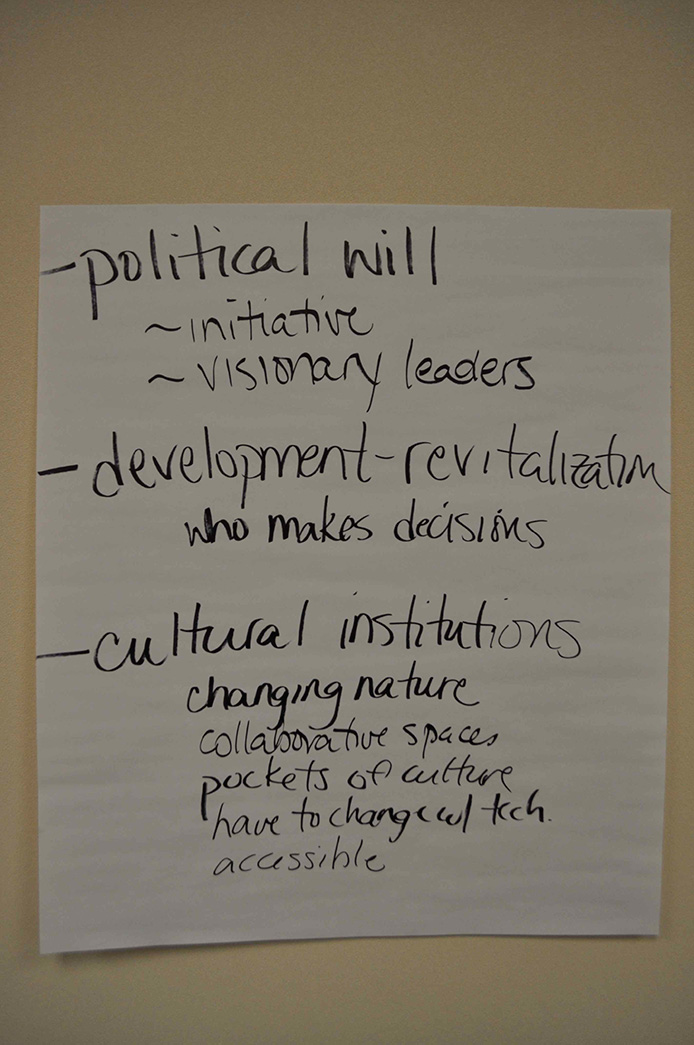
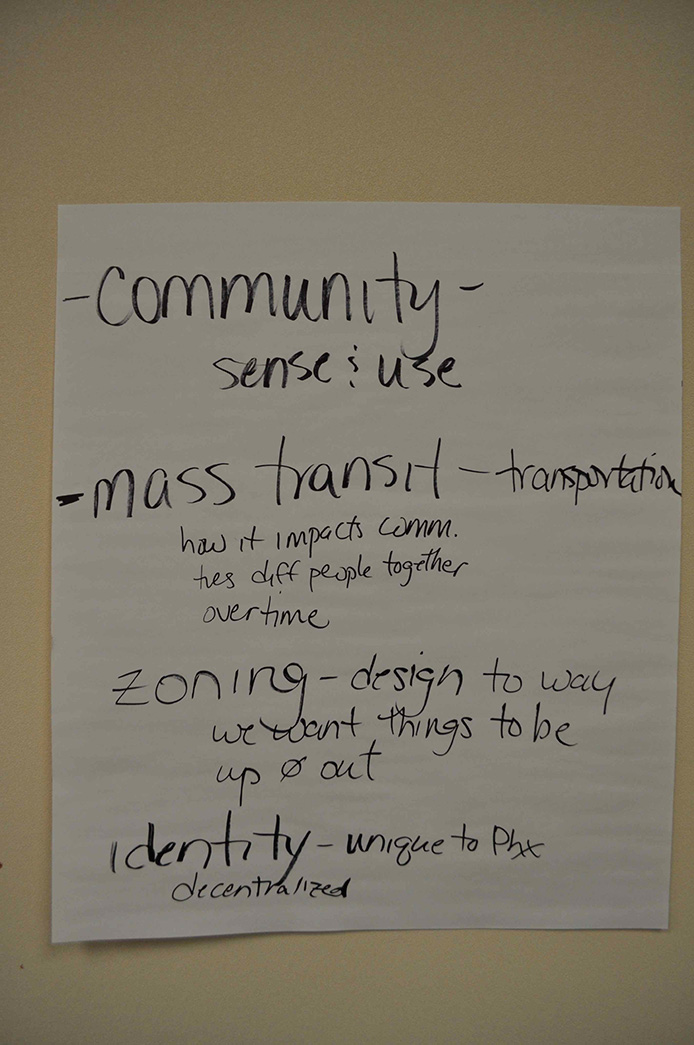 Concerns and Curiosities of Citizens (Session 1_7 to 1_10)
Concerns and Curiosities of Citizens (Session 1_7 to 1_10)
We ended this discussion at 7:45. During a final report out to the entire group of what the groups identified as their concerns and curiosities in relation to the future. We documented the focus of each group’s conversations using a large flip chart so that we could use this list as a starting point to determine the sites. Then we reminded them of Session II’s requirements: Date, time, camera, and objectives. We also reminded them that they would get some reading material between now and Session II.
Brief Outline of Session I
- 5:00 PM: Welcome, Agenda
- 5:05 PM: NANO EQUITY GAME
- 5:25 PM: Debrief from card game
- 5:40 PM: Present the big ideas and where the tours are situated within these. Three ways to think about technologies: asphalt, tomato, cell phone.
- 6:00 PM: Break for Dinner
- 6:15 PM to 645PM: Dinner and discussion about everyday technological change, Probing questions for dinner discussion: Related to technological change in an individual’s life. Try to personalize and localize it.
- 6:45 PM to 7:45PM: Report out of the groups' concerns and curiousities related to the future of the city
- 745PM: NEXT TIME: What are we doing? What will you need?
After the first session, our research team met to conduct a debrief (see ![]() concerns_raised_in_orientation.docx )of what worked and what could be improved. Here is a summary of those
concerns_raised_in_orientation.docx )of what worked and what could be improved. Here is a summary of those ![]() session_i_compiled_reflections_notes.doc. For the purposes of data collection across sites, particularly to track changes and the results of those changes, we would like everyone to plan time either the night of Session I or the next morning to summarize your observations, reflections, and experiences with Session I. These can be informal, but should be written no longer than 24 hours after the ending of Session I. Data Collection Session I:
session_i_compiled_reflections_notes.doc. For the purposes of data collection across sites, particularly to track changes and the results of those changes, we would like everyone to plan time either the night of Session I or the next morning to summarize your observations, reflections, and experiences with Session I. These can be informal, but should be written no longer than 24 hours after the ending of Session I. Data Collection Session I:![]() session_i_debrief_check_list.doc
session_i_debrief_check_list.doc


